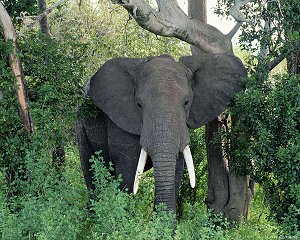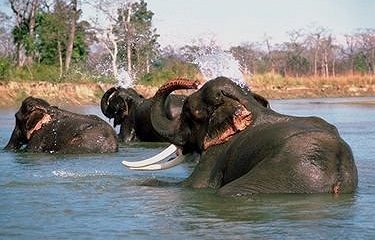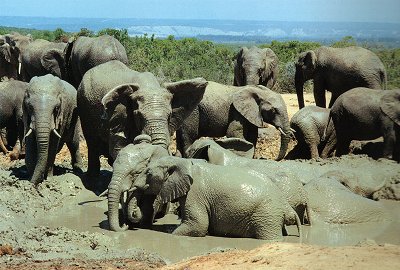THE ORDER PROBOSCIDEA
Proboscidea – Eat with Nose Mammals (2 species)
The sole survivors of a once prevalent order are the two species of elephants, those colossal pachyderms (thick skins) which inhabit Africa south of the Sahara, as well as India, Sri Lanka, and Southeast Asia. The African elephant is the largest land animal alive today at over 15,000 pounds, while the Asian (also known as the Indian) elephant is the most powerful land animal.

Mammoths and mastodons even larger than present-day elephants are counted among their ancestors, but elephants had a humble beginning 50,000,000 years ago when they were only about two feet high and had no trunk. The extinction of the mammoths might be traced to ancient man, who hunted them for their huge food supply and byproducts only 10,000 years ago. Although today’s elephants are limited to the specific warmer areas of Africa and Southeast Asia, their precursors were found on every continent but Australia and Antarctica, and inhabited every type of climate, with the wooly mammoth wandering into the coldest of winters.
Obviously, elephants are easily recognized by their amazingly strong and long trunk. The trunk is also quite sensitive, with the tip being able to pick up the smallest of objects with ease. By curling their trunks around bushes, grasses, or tree branches and pulling, the elephant can then take the vegetation with his trunk and put it into his mouth to eat. And thus we derive the name Proboscidea, which literally means “eat with the nose.”

The tusks are elongated upper incisors, and elephants have no canines or premolars. The huge molars are used to grind their vegetarian food, are replaced successively from behind as they wear down. An elephant receives six sets of molars in its lifetime, and so its lifespan is limited to the time that it takes to wear down six sets of these teeth – usually about 60 years.
Their large external ears act as coolers in hot weather. The warm blood rushes through the ears, which the elephant fans slowly. As the heat is dissipated by the fanning, so the now-cooler blood can return to the circulation system. Their legs are like pillars supporting their great weight and bulk, with “knees” on the front legs as well as the back. Amazingly, an x-ray shows that elephants are walking on their very toe tips, protected by a large pad. When elephants walk or run they must keep two legs on the ground at all times. They can still outrun a human being, but they cannot jump as high. That is because an elephant cannot jump at all.

Generally speaking, African elephants are larger than their Asian counterparts and have markedly larger ears. African elephants have concave backs, while Asian elephants have humped backs. Asian female elephants usually have no tusks. Asian elephants are more easily trained than their African counterparts and are used in place of heavy machinery in Southeast Asia during construction projects.
Elephants travel in herds and forage on trees, shrubs, and grasses. One adult male elephant consumes 300 to 400 pounds of vegetation per day, for which he must forage up to 20 miles, and it drinks over 40 gallons of water each day. Elephants always also enjoy mud baths to protect themselves from insects, sunburn, and overheating, like the other pachyderms – hippos and rhinos.
Check out the African and Asian elephants.
